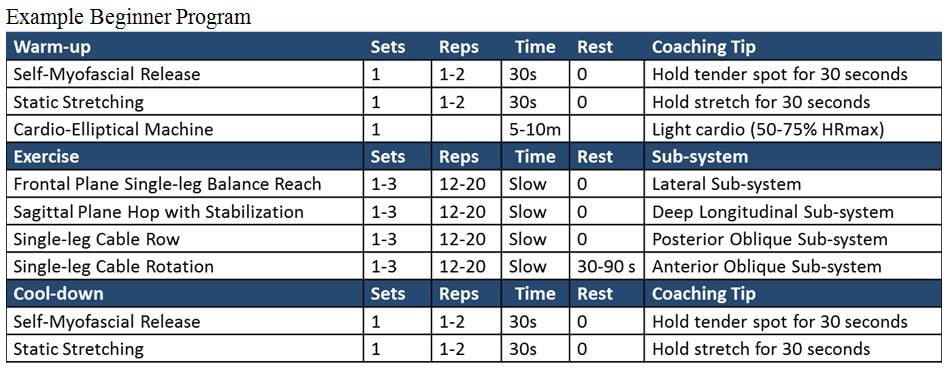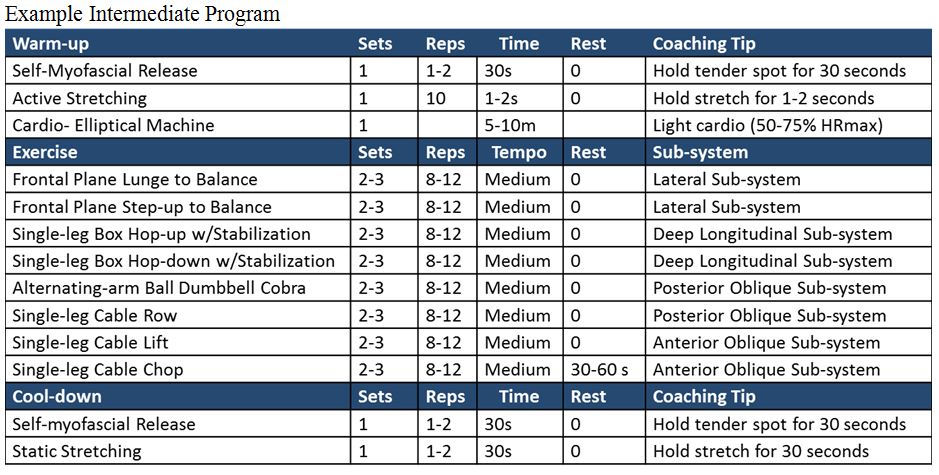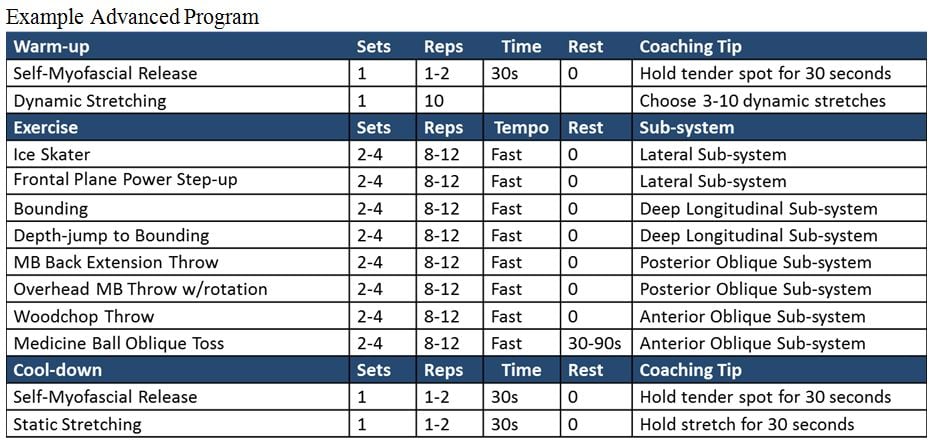As is stated in the NASM CPT personal trainer course, Muscles don’t work alone to create movement. They work together in synergies to create coordinated movements. Here we’ll identify the four muscle subsystems, discover how these synergies work together, and how to select exercises for developing optimal performance.
Introduction
The purpose of this article is to provide fitness professionals with a brief overview and definition of the four subsystems within the human body. We’ll breakdown and explain the structure and function of these four subsystems and how they relate to human movement (much of this information comes from the NASM Corrective Exercise Specialization program).
Lastly, we’ll describe exercise programming strategies for training these subsystems to maximize coordinated movement.
What are Muscle Synergies?
Before discussing the individual subsystems, it’s important to quickly review muscle synergies. One of the most important concepts when discussing human movement is that muscles are recruited by the nervous system as groups known as muscle synergies. Rarely do muscles work in isolation.
This simplifies movement by allowing muscles and joints to operate as a cohesive unit. Joint motion is caused by muscles pulling on bones. Because muscles are recruited as synergies, multiple muscles will transmit force onto their respective bones, creating movement at the joints. For example, during the simple act of shoulder extension, the latissimus dorsi, teres major, and posterior deltoid all work together as a cohesive unit to perform the movement pattern.
Local vs. Global Musculature
Looking at the muscular system more closely, research by Bergmark (1) proposed that there are two distinct, yet interdependent, systems that enable our bodies to distribute forces efficiently. These systems include the local muscular system, also known as the stabilization system, and the global muscular system, often times referred to as the movement system.
The local musculature system is composed of muscles that are predominantly involved in support and stabilization of the spine. The local muscular system muscles do not provide gross movements; rather they provide stability and support during joint motion. They are usually located in close proximity to the joint making them ideal for increasing joint stiffness and stability, such as the transverse abdominis, multifidus, and pelvic floor.
On the other hand, the global muscular system is responsible predominantly for movement of the trunk and extremities, and primarily consists of large superficial musculature, such as the rectus abdominis, latissimus dorsi, and external obliques. For this article we will be focusing on the global muscular system. However, it is important to remember that proper activation and recruitment of both systems is required for optimal movement and performance.
The Four muscle Subsystems
The human body consists of four common muscle synergies:
- lateral subsystem
- deep longitudinal subsystem
- posterior oblique subsystem
- anterior oblique subsystem.
These subsystems allow for an easier description and review of functional anatomy. However, it’s crucial for fitness professionals to think of these subsystems operating as a cohesive unit. For ease of explanation, these four subsystems have been oversimplified but the human body simultaneously utilizes all four of these subsystems during activity.
The lateral subsystem
The lateral subsystem (Figure 1) is comprised of the gluteus medius, tensor fascia latae, adductor complex, and contralateral (opposite) quadratus lumborum. The lateral subsystem is implicated in frontal plane stability and is responsible for pelvo-femoral stability during single-leg movements such as in gait, lunges, or stair climbing.
The ipsilateral (same side) gluteus medius, tensor fascia latae, and adductors combine with the contralateral quadratus lumborum to control the pelvis and femur in the frontal plane.
Dysfunction in the lateral subsystem is evident by excessive pronation of the knee, hip and/or feet during everyday movement and exercise. In other words, you may see the individual’s knee cave inward (medial displacement) and/or the arch of the foot collapse during movements such as squatting or walking (2).
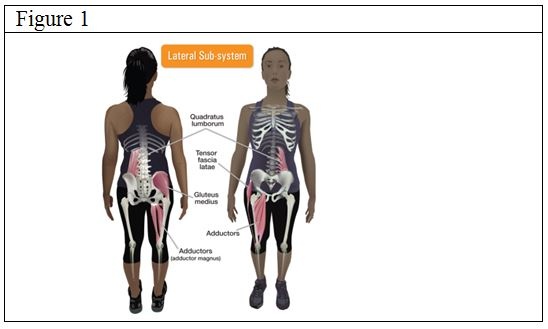
Deep Longitudinal Subsystem
The deep longitudinal subsystem (Figure 2) is comprised of the erector spinae, thoracolumbar fascia, sacrotuberous ligament, and bicep femoris. The deep longitudinal subsystem helps to stabilize the body from the ground up. More specifically, it provides force transmission longitudinally from the foot and ankle to the trunk and back down.
The dominant role of the deep longitudinal subsystem is to control ground reaction forces during gait motions (2).
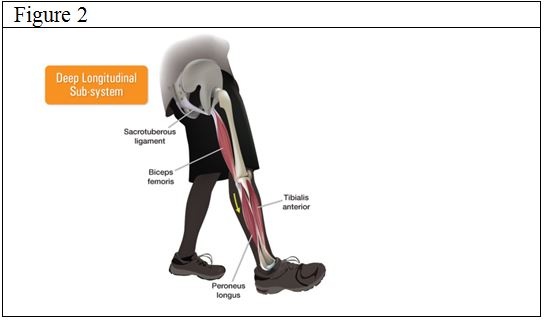
Posterior Oblique Subsystem
The posterior oblique subsystem (Figure 3) is comprised of the gluteus maximus, latissimus dorsi, and thoracolumbar fascia. The posterior oblique subsystem works synergistically with the deep longitudinal subsystem distributing transverse plane forces created through rotational activities.
The gluteus maximus and latissimus dorsi attach to the thoracolumbar fascia, which connects to the sacrum. The fiber arrangements of these muscles run perpendicular to the sacroiliac joint (SIJ). Thus when the contralateral gluteus maximus and latissimus dorsi contract they create a stabilizing force for the SIJ.
In addition, the posterior oblique subsystem transfers forces from the transverse plane into propulsion in the sagittal plane when we walk or run. The posterior oblique subsystem is also of prime importance for other rotational activities such as swinging a golf club, a baseball bat, or throwing a ball.
Dysfunction of any structure in the posterior oblique subsystem can lead to SIJ instability and low-back pain. The weakening of the gluteus maximus and/or latissimus dorsi may also lead to increased tension in the hamstrings and may cause reoccurring hamstring strains (2).
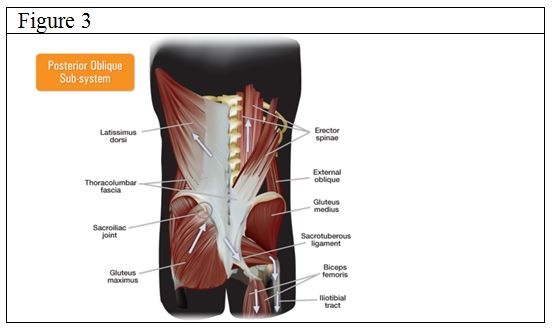
Anterior Oblique Subsystem
The anterior oblique subsystem (Figure 4) is comprised of the internal oblique, external oblique, adductor complex, and hip external rotators. Like the posterior oblique subsystem this system also functions in a transverse plane orientation, only from the anterior portion of the body.
When we walk our pelvis must rotate in the transverse plane in order to create a swinging motion for the legs. This rotation comes in part from the posterior oblique subsystem posteriorly and the anterior oblique subsystem anteriorly. The anterior oblique subsystem is also necessary for activities involving the trunk and the upper and lower extremities.
The obliques, in concert with the adductor complex not only produce rotational and flexion movements, but they are also instrumental in stabilizing the lumbo-pelvic-hip complex (2).
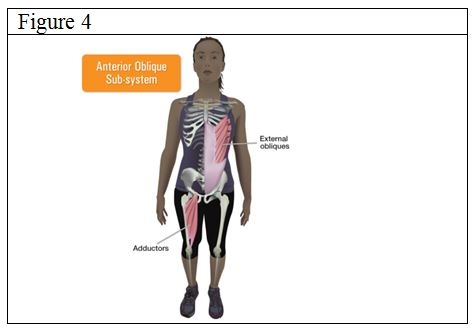
Program Design for muscle synergies
Now that we have a basic understanding of muscle synergies and the four primary subsystems, hopefully you can see the importance of incorporating specific movement patterns into a fitness or sport performance program versus always training muscles in an isolated environment.
Utilizing multi-joint, multiplanar exercises enhances the nervous system’s ability to properly recruit muscle synergies improving coordination. This has a carry-over effect into everyday activities and sports, thus enhancing a client’s quality of movement.
Using the principles we’ve just learned let’s look at some exercises that may improve subsystem function. But please keep in mind, all of the subsystems work as a functional unit, therefore many exercises will simultaneously challenge multiple subsystems. However, certain exercises can emphasize one system over the others.
Lateral Subsystem Exercises
As mentioned earlier the lateral subsystem is implicated in frontal plane stability. Therefore, in order to challenge the muscle synergies of the lateral subsystem it makes sense for exercises to be performed on a single-leg and predominantly in the frontal plane.
For example, the Frontal Plane Single-leg Balance Reach (Figure 5) is a prime example of a lateral subsystem exercise. It challenges the muscle synergies of the lateral subsystem by forcing these muscles to keep the pelvis level and the femur from excessively adducting into the frontal plane.
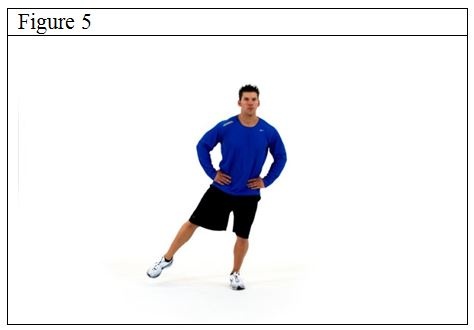
Deep Longitudinal Subsystem Exercises
The dominant role of the deep longitudinal system is to control ground reaction forces during gait motions. Thus exercises mimicking this movement pattern would emphasize the deep longitudinal subsystem.
The Sagittal Plane Hop with Stabilization (Figure 6) is an example of a deep longitudinal subsystem exercise. It improves muscle synergies and neuromuscular coordination between the lower extremities and trunk and helps a client learn how to eccentrically control ground reaction forces.
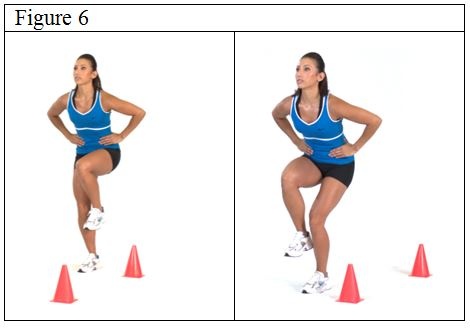
Posterior Oblique Subsystem Exercises
The posterior oblique subsystem works synergistically with the deep longitudinal subsystem distributing transverse plane forces created through rotational activities. Therefore, in order to challenge the muscle synergies of the posterior oblique subsystem exercises should be performed in the transverse plane targeting the gluteus maximus and contralateral latissimus dorsi.
The One–arm Single-leg Cobra (Figure 7) is an example of a posterior oblique subsystem exercise because it involves transverse plane motion of the trunk and simultaneous activation of the gluteus maximus and contralateral latissimus dorsi.
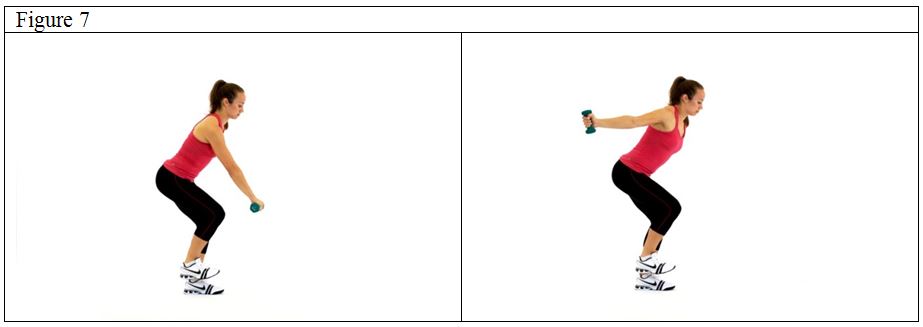
Anterior Oblique Subsystem Exercises
The anterior oblique subsystem also functions in a transverse plane orientation very similarly to the posterior oblique subsystem only from the anterior portion of the body. Therefore, exercises that emphasize the anterior oblique subsystem should involve transverse plane motions of the trunk and activation of the adductors and hip external rotators.
The Single-leg Cable Chop (Figure 8) is an example of an anterior oblique subsystem exercise. It involves transverse plane motion of the trunk and simultaneous activation of the hip external rotators (gluteus maximus and gluteus medius) and adductors.
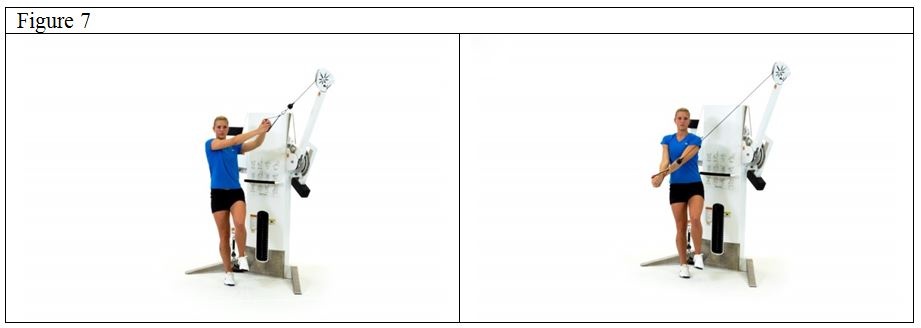
Programs
Now that we have an idea of types of exercises that target certain subsystems, we can begin designing exercise programs focusing on specific movement patterns targeting the four primary subsystems rather than individual muscles. This type of training not only promotes optimal force-couple relationships and joint motion, but can potentially burn a high number of calories if performed in a circuit fashion.
Check these blogs out for more information
References
- Bergmark A. Stability of the lumbar spine. A study in mechanical engineering. Acta Orthop Scand Suppl. 1989;230:1-54.
- Clark MA. Lucett SC. Sutton, BG. NASM Essentials of Corrective Exercise Training 1st Edition Revised. Burlington, MA: Jones and Bartlett Learning; 2014.


